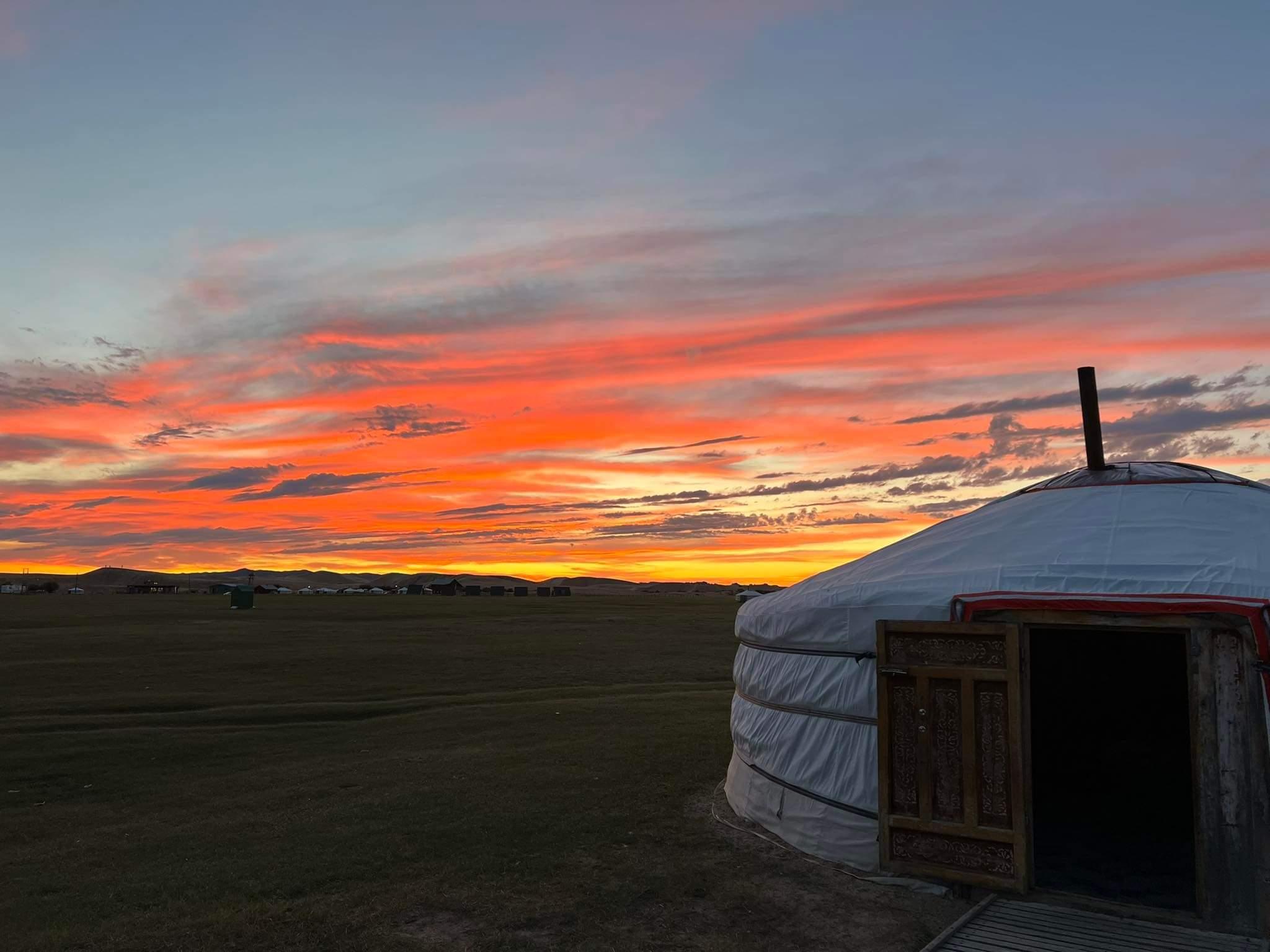MONGOLIA DESTINATION
Mongolia is truly one of the world's last undiscovered travel destinations and the safest country to visit. It is a land where you can experience wide-open spaces, cobalt blue skies, forests, deserts, crystal clear rivers and lakes, and the traditional hospitality of the nomads. Permanent dwellings are few and far between, fences even fewer and the land is owned by the people, like one large National Park. As a tremendous destination to experience the outdoors, Mongolia also boasts of unique history dating back to the Mongol Empire of Genghis Khan. Simply put, it is a land of adventure, horses, nomads, and blue sky.
-
Southern Mongolia
 One of the most popular travel routes in Mongolia is the Gobi desert, the habitat of the rarest animals and a unique natural landscape. The Gobi Desert is a vast zone of desert and desert steppe covering almost 30 percent of the Mongolian territory. The area is often imagined as a lifeless desert like in many other parts of the world. In reality, most part of the Gobi Desert is a land of steppes, sands, mountains and it is the home for camel breeders rich with wildlife and vegetation. Wild asses, camels, snow leopards, mountain sheep and gazelles flourish here, as do different types of flora. Dinosaur skeletons and their petrified eggs have been preserved here to the present day.
One of the most popular travel routes in Mongolia is the Gobi desert, the habitat of the rarest animals and a unique natural landscape. The Gobi Desert is a vast zone of desert and desert steppe covering almost 30 percent of the Mongolian territory. The area is often imagined as a lifeless desert like in many other parts of the world. In reality, most part of the Gobi Desert is a land of steppes, sands, mountains and it is the home for camel breeders rich with wildlife and vegetation. Wild asses, camels, snow leopards, mountain sheep and gazelles flourish here, as do different types of flora. Dinosaur skeletons and their petrified eggs have been preserved here to the present day.
Khongor Sand Dunes

This is a Mongolian largest sand dune reaching a height of 800 meter in some highest areas. The sand dunes in Sevrei sum, South Gobi aimag, are called Khongoryn Els. These dunes are 20 km wide and 100 km long. The Khongoryn River flows along the sand dunes and gives birth to oases. The sand dune change the color with each hour of one day, from yellow to silver to rise colored at dawn / sundown. This dune is considered one of the biggest dunes with it is length of 180 km and width of 3-5 km. The dunes make sound like plane engine in a windy day so it has been named as "Singing Dunes".
Bayanzag /Flaming cliffs/
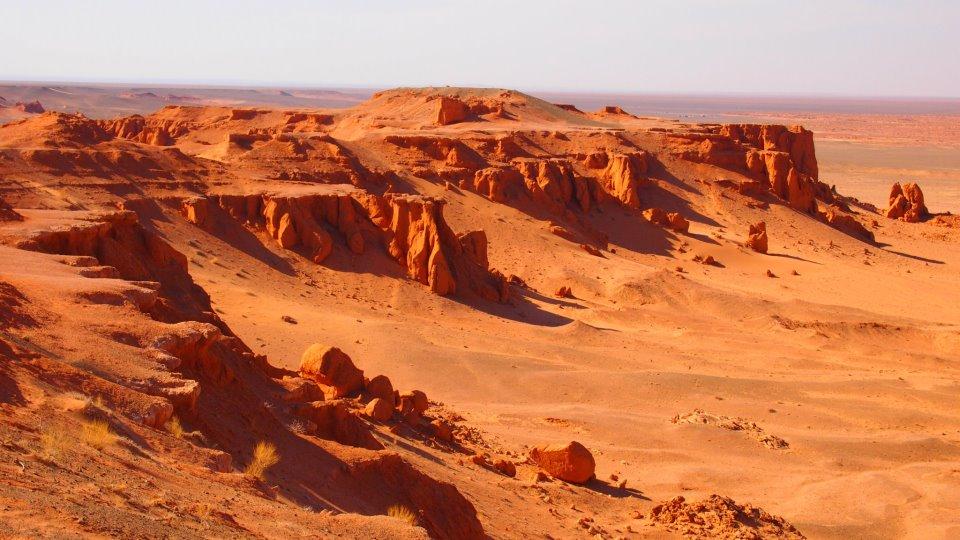
Bayanzag / Flaming cliffs – first discovered by Roy Chapman Andrews, famous American explorer in the 1920, flaming cliffs of Bayanzag are an important site for both archeological and paleontological finds. Complete dinosaur skeletons, including One-horned dinosaur (protocertops) and Egg-thief (Oviraptor) and numerous eggs were excavated in ravines between the red flaming cliffs, which look like fire in the middle of the desert from distance. Activities: desert expeditions, camping, trekking, paleontology
Yol Valley
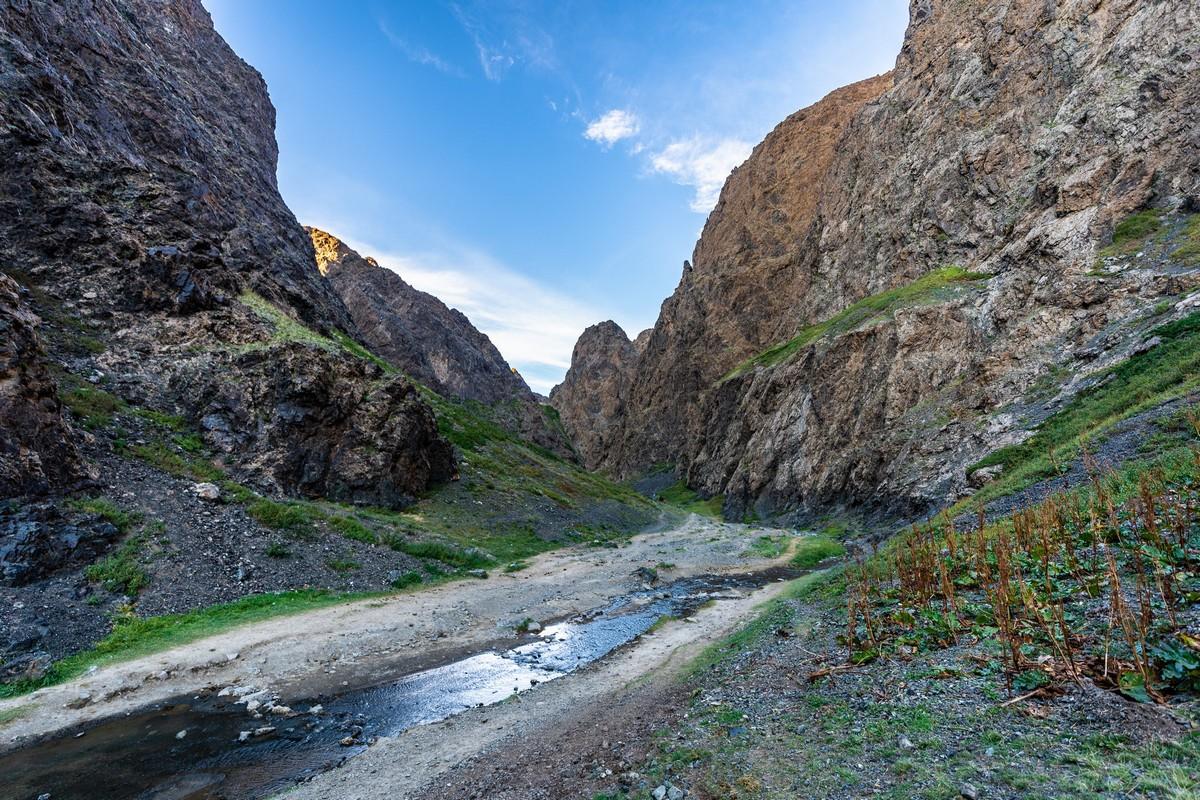
Yoliin Am canyon – One of the best-known travel destinations in the Southern Gobi is Yoliin Am canyon, known as Eagle Valley, which is a part of the Gobi Gurvan Saikhan Mountain National Park (meaning “Three Beautifies of the Gobi”). But in fact, Yol means Lammergeyer, one of the most endangered bird species of prey. Sheltered by high cliff walls on both sides of the canyon, thick ice gorges remain frozen even on summer’s hottest days. Activities: camping, mountain climbing, trekking, wildlife viewing.
Baga gazriin chuluu - Small Rocky Formation
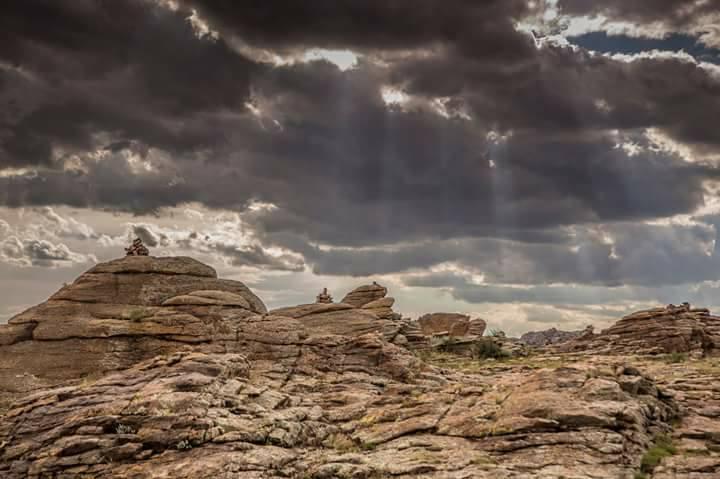
The 1751-meter high granite stone mountains in the territory of Adaatsag soum, Dundgobi aimag /Middle Gobi province/, is another place with unique scenery that many tourists compare with lunar scenes. The mountain contains remains of old temples. They are not only rich in minerals, crystals but also eyes spring, old stone temple ruins related with 17th century.
Ongi temple
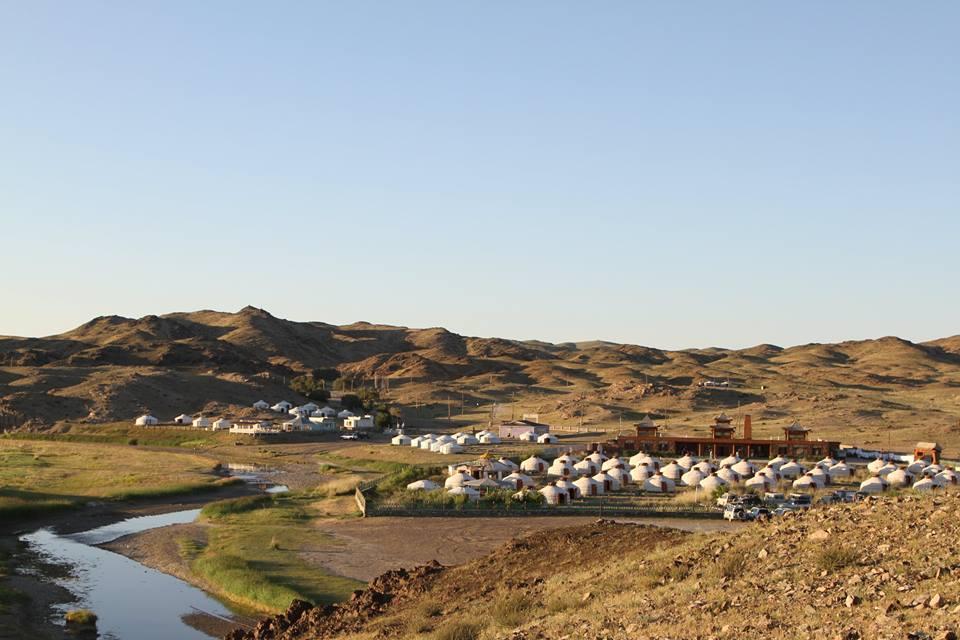
It is a ruin of big monastery of BariYonzon Khamba on the bank of the Ongiin River. This monastery has 28 temples and other buildings on the south slope of the Rocky Mountain like Balsa country and stupas haven't broken. This monastery had about 1000 lamas. Which itself was badly destroyed during the Stalinist purges in 1930s. All the temples were destroyed by Stalin's thugs. Since 1994 people rebuilt one Temple. Now there are 10 lamas studying.
Gobi Camel Herder Nomads
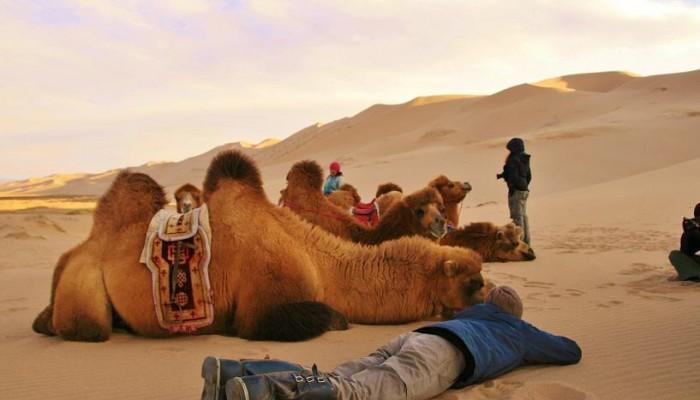
Visiting camel herder’s family, explore their unique nomadic lifestyle which has not changed for centuries. Its chance to try drinking Hormog (fermented Mongolian camel milk) when visiting a herder family in their Ger. There is great opportunity to ride a Bactrian camel.
Tsagaan suvraga - White cliff
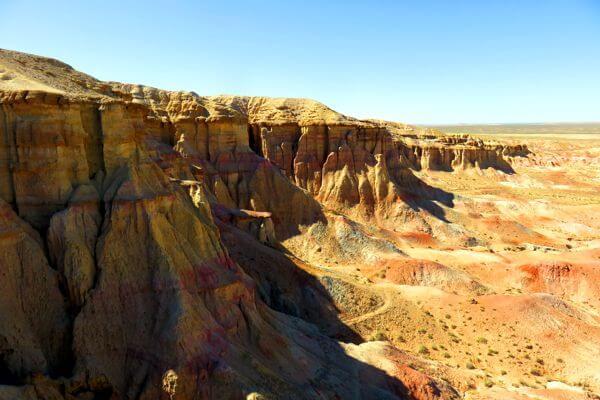
The scarp of Tsagaan Suvarga is located in Ulziit soum of Dundgovi province. It is interesting to see the sheer slope, facing east, which from a distance seems to be the ruins of the ancient city. The cliff is 30 meters high and 100 meters wide. Over thousands of years the wind has created this amazing structure. It is sheer slope and was an old seabed with sedimentary structure created by millions years and the different colors of the ground represent different times. The formation is over 50m in its highest point and continues 400m. Exploring Del uul (Back Mountain) for seeing rock drawings of Bronze Age. This is considered to be largest site of Rock drawings in Central Asia.
Khermen Tsaw
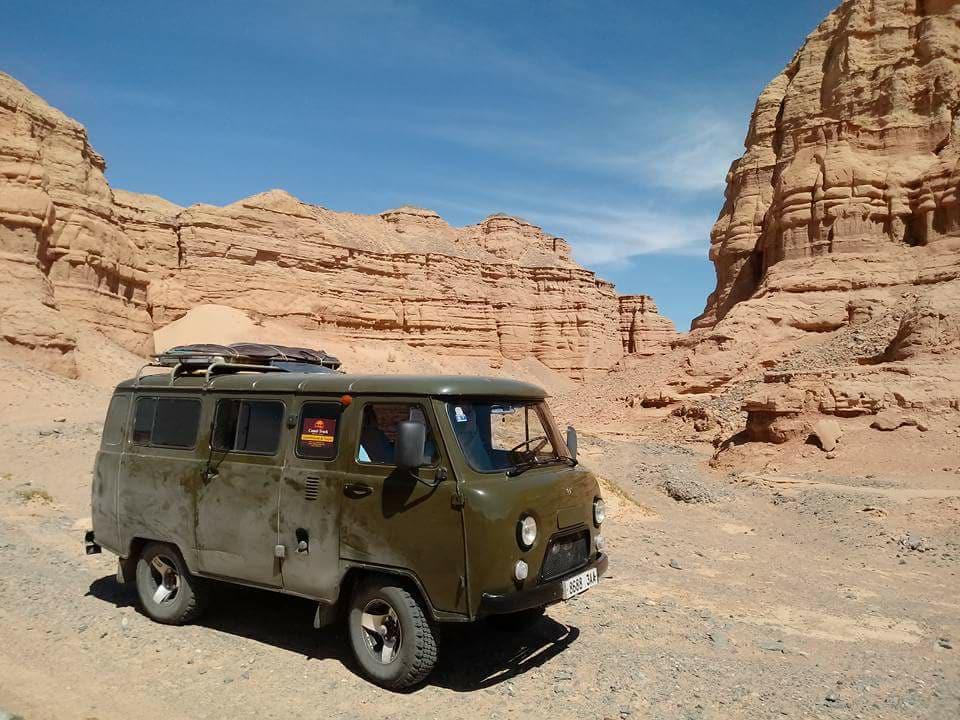
Khermen Tsav is an alluring red looking canyon that stretches for 15-20 km. 65-250 million years ago Khermen Tsav was an ocean bed. After dried out, millions of years wind and water erosion formed this majectic looking canyon with moon surface shapes. The red colors in the sunset brings you feel like you are on the moon surface. American Scholar and Palaeontologist Roy Chapman Andrews named this place as "The end of the world". The site is known not only by its beauty of natural formation, but also by its findings of dinosaur fossils and eggs. The first full skeleton of a dinosaur was found in this place. Khermen Tsav, in English translation it means as “Cracked wall”. It is a precipice, located in 10 km from Gurvantes sum, Umnugobi province. At the end, 10 km wide and 100-200 m deep. When see it from far it is looks like ruin of big city. Here the mud rock stretches from the northwest to the southwest and the formation of Khermen Tsaw resembles unfinished artistic architecture and well-designed red brick buildings of ancient cities. Many Dinosaur fossils were found here among the saxaul forest and desert plants. Khermen tsav is 450km from Dalanzadgad (center of Umnugobi province), 250km from Khongor sand dunes so we can via some picturesque land such as Zulganai, Narandaats and Gurvantes.
Khamriin Khiid - World Energy Center
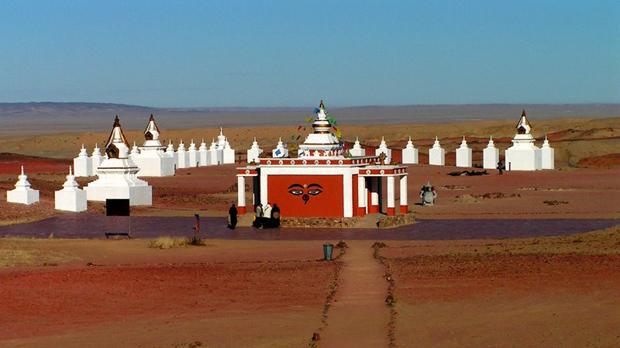
Khamar Monastery was established in the 1820’s by famous 19th century Mongolian educator and literary figure Danzanravjaa. An outspoken critic of the society in which he lived, Danzanravjaa fought against the rigid class and gender distinctions of his day. Under his influence women were especially encouraged to participate in religious activities, Khamar Monastery was unique in 19th century Mongolia as a place where women were accorded greater respect and priviliges than men. Khamar monastery has always been refereed as the energy center. Currently two small ceremonial temples and several religious monuments have been reconstructed, with more than ten lamas now in residence at the monastery. To the north of the monastery were a series of caves where monks would practice yogic exercises and meditate in isolation for 108 days at a time, hardening their bodies whilst expanding their physical and spiritual powers. Fossilized dinosaur bones, petrified wood, and other rare paleontological remains are widespread in the area surrounding the monastery. Paleontologists working in the region have dug up most notably a skeleton of the herbivorous dinosaur iguanodon, which lived in the Cretaceous period between 80 and 200 million years ago, At its peak Khamriin khiid monastery consisted of four main sections - East Khuree, west Khuree, Tsokhon and Dunkher - comprising four colleges (datsan) and the children's school, more than eighty temples, and a resident population of over five hundred lamas. The monastery was completely destroyed by the military in 1938 during Mongolian religious purge. Currently two small ceremonial temples and several religious monuments have been reconstructed, with more than ten lamas now in residence at the monastery.
Zorgol Khairkhan Mountain

Zorgol khairkhan is a sacred mountain, found in the area of Bayan Unjuul soum of Tov aimag/province, about 150 km from Ulaanbaatar. The peak is 1686 m ASL. Zorgol Khairkhan Mountain is venerated and revered by the local people, who believe that it is the siege of a great, benevolent spirit. The huge, red granite mountain does indeed have a diverse and beautiful nature to offer. It has many caves and water springs. home of the Argali wild sheep, Ibex and Red deer and many other animals. There are several burial sites of ancient Mongol soldiers around this mountain. According to shamanic custom, pronouncing the name of the holy mountains while visiting them is forbidden. In history, it is said that Chinggis king used to go for hunting around this mountain.
Demchin Monastery Energy Center

Demchig Monastery is located in the southern part of Mongolia, Khanbogd village in Umnugobi province, over 600 km from Ulaanbaatar. Demchigiin khiid is one of the three unique monasteries in Galbiin Mountain, build by Mongolian most well known poet, Buddhist monk Danzanravjaa in 19 century. The builder was a famous one for his name as the Saint Lord of Gobi / D.Danzanravjaa/. 1830 Demchig Monastery was destroyed during the Stalinist purges in 1930. Since 1994 it is protected and we began to restore some tempels. Mongolian people worship the area and the monastery is nowadays reconstructing. The monastery named Demchig is considered by Buddhist to be the world energy center. There is a large deposit of alkaline granite very close to the monastery, is believed to be the worlds largest deposit of alkaline granite. So it makes the area as special as known the World Energy Center with its huge natural energy. A cave of wealth - in 15 kms from Demchig Monastery there is a cave in low mountain, which locals believe it has ability to grow your money if you rub your cash in its walls.
Ikh Gazriin Chuluu
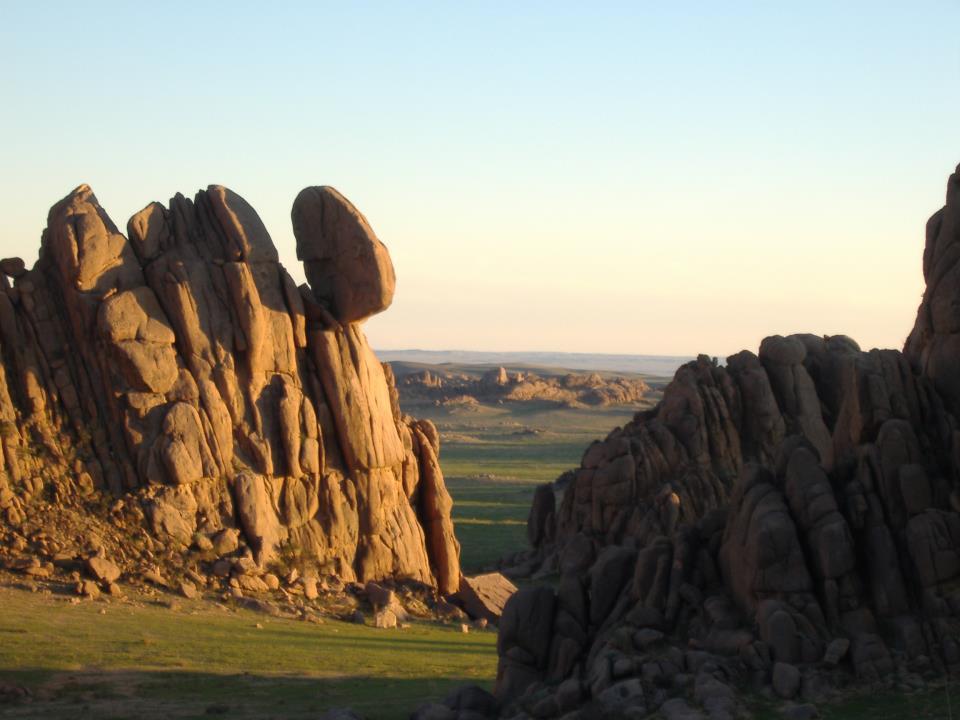
It’s a mountain of granite rock in the Gobi Desert with a peak of 1706 meter high. It is afforded opportunity to visit this interesting site. This rocky mountain is situated in Middle Gobi. It is about 20 kilometers from the west to the east. There are many interesting stories about local historic people who had lived or had been hidden in caves from the royalties of that time. It has a rich family of plants and is a home to many wild animals. There is a open theatre of national Long song of Mongolia.






